Porsche 911 vs. Porsche 911, a Half-Century Apart
I arrived in Jupiter, Florida, on a Saturday evening to drive Richard Raimist’s pair of Porsche 911s—a Sepia Brown 1973 911T Targa, and a Sepia Brown 2023 911 Targa 4 GTS—to try to determine how 50 years of man-made evolution has affected the world’s favorite sports car. Raimist is the original owner of both cars, having bought the ’73 when he was 20 years old, and the ’23 when he was—well, 50 model years older.
But first, dinner.
We start the conversation in 1973. “I was living in Los Angeles, and driving there, I was always attracted to the Porsches. A 911, a 356, they would always turn my head. So I researched the brand, and it just created a passion for them. In ‘73, I was 20 years old. Still living at home. My parents were separated, and I was living with my mom and my sister.”
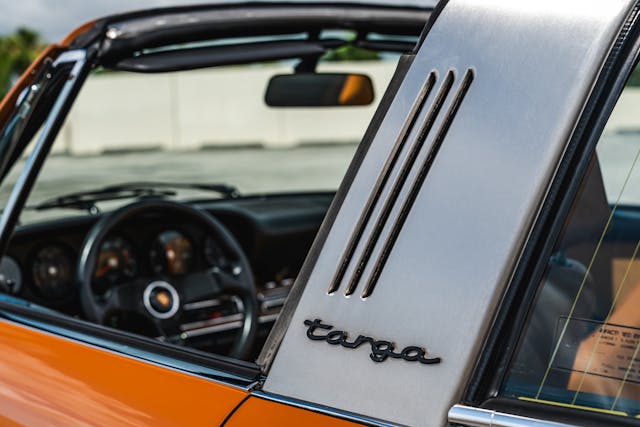
Raimist wanted, needed, a new 911. “I’d been working in the film industry, and I made some pretty good money—I worked for a couple of different studios, 20th Century Fox was one. My specialty was post-production. I was a union member and we worked really long hours, sometimes at double- or triple-pay.”
Despite the hours he put in, “I wasn’t making enough money to buy the Porsche. So I went to my mom and asked her if she’d be willing to help out, and she said I’d have to go to my grandfather to get his approval.” Uh oh, that was daunting: “My grandfather was the CEO and president of an international company for 40-plus years. He was a fiscally conservative guy. I was kind of intimidated.” Raimist asked, and grandad answered: “He said, ‘No, Richard. No. No. No. I’m not approving that.’
“So I went back to my mother. And she said, ‘That’s OK, I’ll cover the additional cost.’ The sticker price was $8500. With tax and title and some options, the out-the-door price was right at $10,000. Which back then was a lot of money.” Indeed it was, I suggest: My 1973 Plymouth Road Runner, with a Hurst four-speed and a 400-cubic-inch V-8, only cost about $4700.
“So I got the car, and I just loved it. I put 115,000 miles on her as a daily driver. She was a 1973.5 911T Targa model; they had a mid-year change. The DOT and the EPA made some emission-standards rulings, and Porsche had to change the induction system to get better fuel mileage. That’s when they transferred over from mechanical fuel injection to the CIS [Continuous Injection System].”
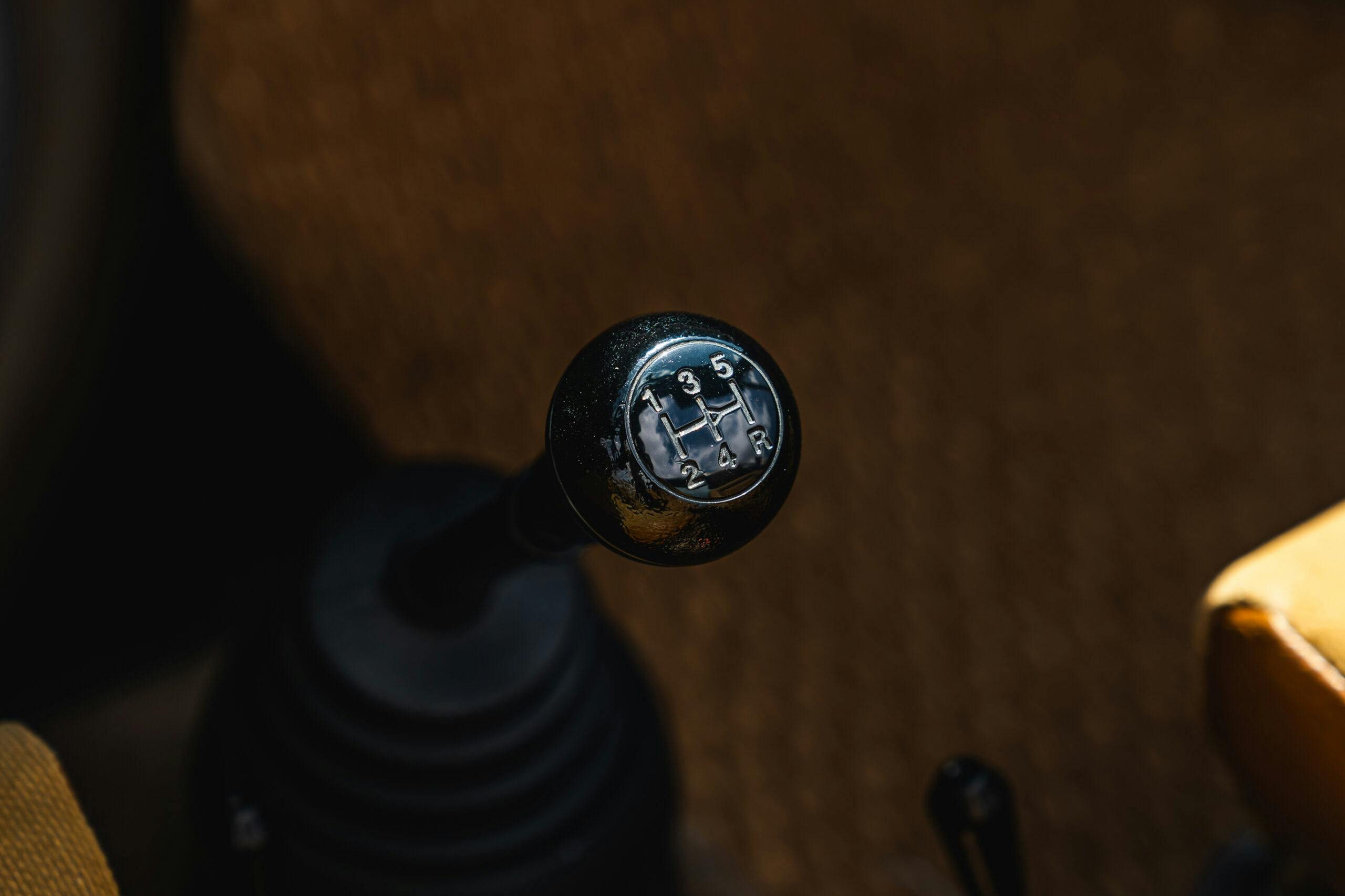
Raimist continued to drive his 911 for 13 years. “I moved down to San Diego in 1986, and I put her in storage for five years. My girlfriend at the time said, ‘You’ve made some money in the markets—why don’t you take it out of mothballs and go enjoy the ride?’ With that I took it to Alan Johnson Racing,” a Porsche tuner in San Diego. Johnson won over 120 races as a driver, including four SCCA National Championships. (This isn’t, by the way, drag racing’s Alan Johnson.)
Raimist wanted to get into autocross, “So I was looking for a little bit more oomph, a little bit bigger tires.” AJR cut the fenders and added 1973 OEM steel RS flares, “and we went with a bigger wheel and tire package.” They swapped the tired 2.4-liter engine out for a 1986 3.2-liter, changed the sway bar and added adjustable spring plates, and Raimist began autocrossing with the local chapter of the Porsche Club of America.
He did that for two years, “and occasionally I trailered her up to Willow Springs,” where he said he “really got the bug” for road courses.
So he bought a 1973 911T, low mileage, from a banker in La Jolla, “but it wasn’t really enough. I wanted more.” Back to Alan Johnson’s shop, which was by then, and still is, called AJ-USA, “where we built an RSR tribute out of it. Big wheels and tires, and we went to a 3.2-liter, high butterfly slide-valve, twin-plug motor—she was probably putting out between 300 and 320 horsepower, in a car weighing about 2100 pounds. Did more time trials up at Willow Springs, and then did a three-hour nighttime enduro. We finished first in class.”
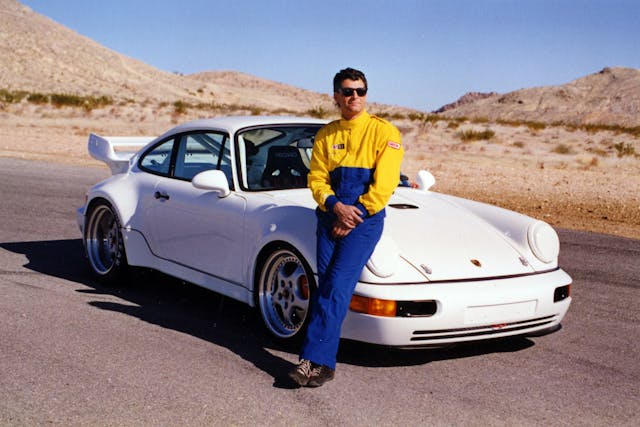
And that, Raimist said, “lit a fire in my belly. After that event, I went and purchased a 1994 964 3.8-liter Carrera RSR factory car from Porsche. And I kind of took it to a whole ‘nother level.” Next came an enclosed 23-foot trailer, and a Ford heavy-duty van to tow it with, and he went around the country, club racing with the PCA in 1994.
Then came a whole ‘nother level, part two: Raimist rented a seat in Larry Schumacher’s race car, a 1994 Porsche Factory Cup model, “and I ran the 24 Hours of Daytona in 1995, as an amateur driver. Dipped my toe into the water. We did all 24 hours, I don’t remember where we finished.” It was actually 27th, in a field of 74 cars. Not bad. The 24 was more attainable then, a little easier for amateurs to access, both in terms of money and talent. And Raimist was about to make something happen.
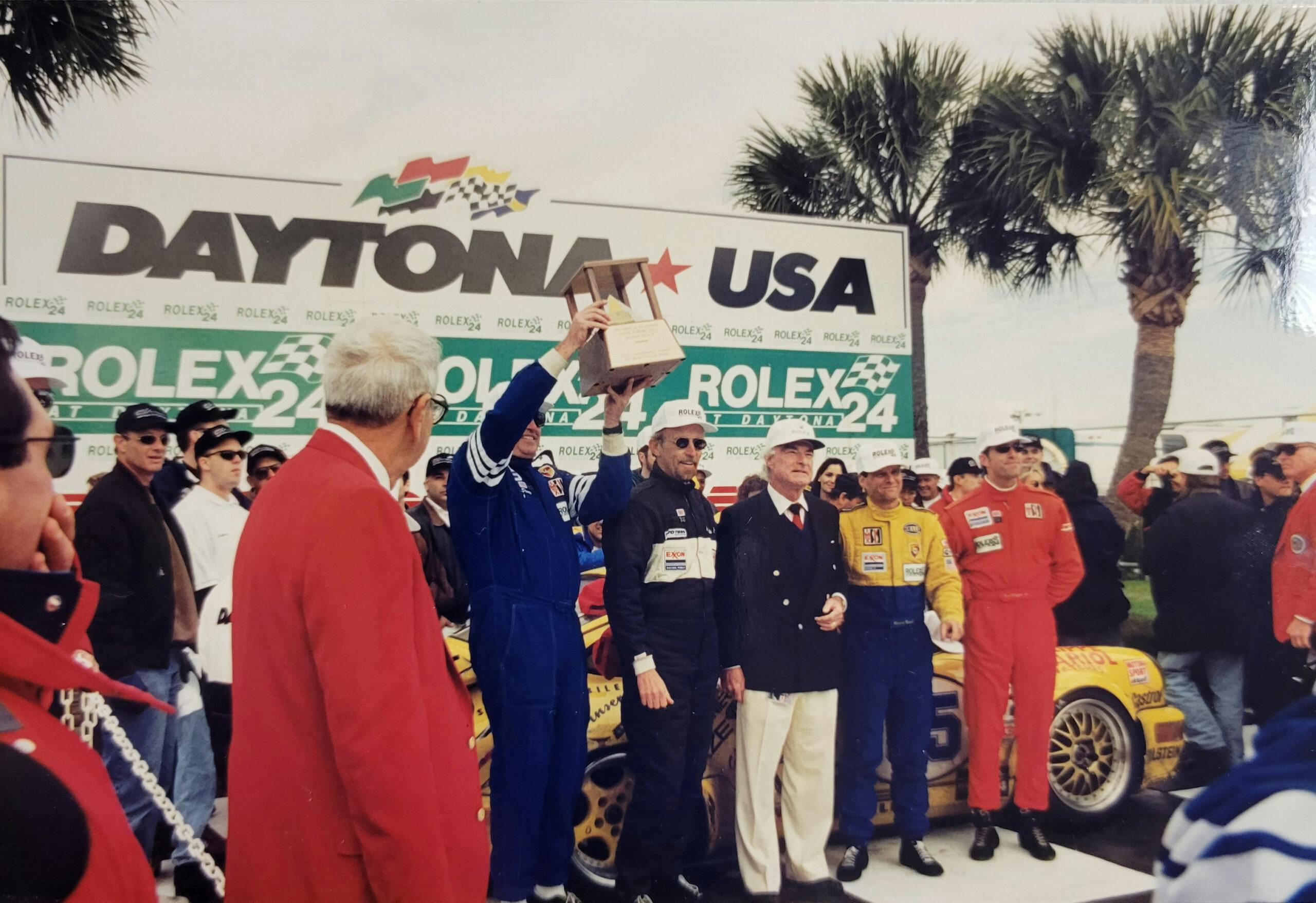
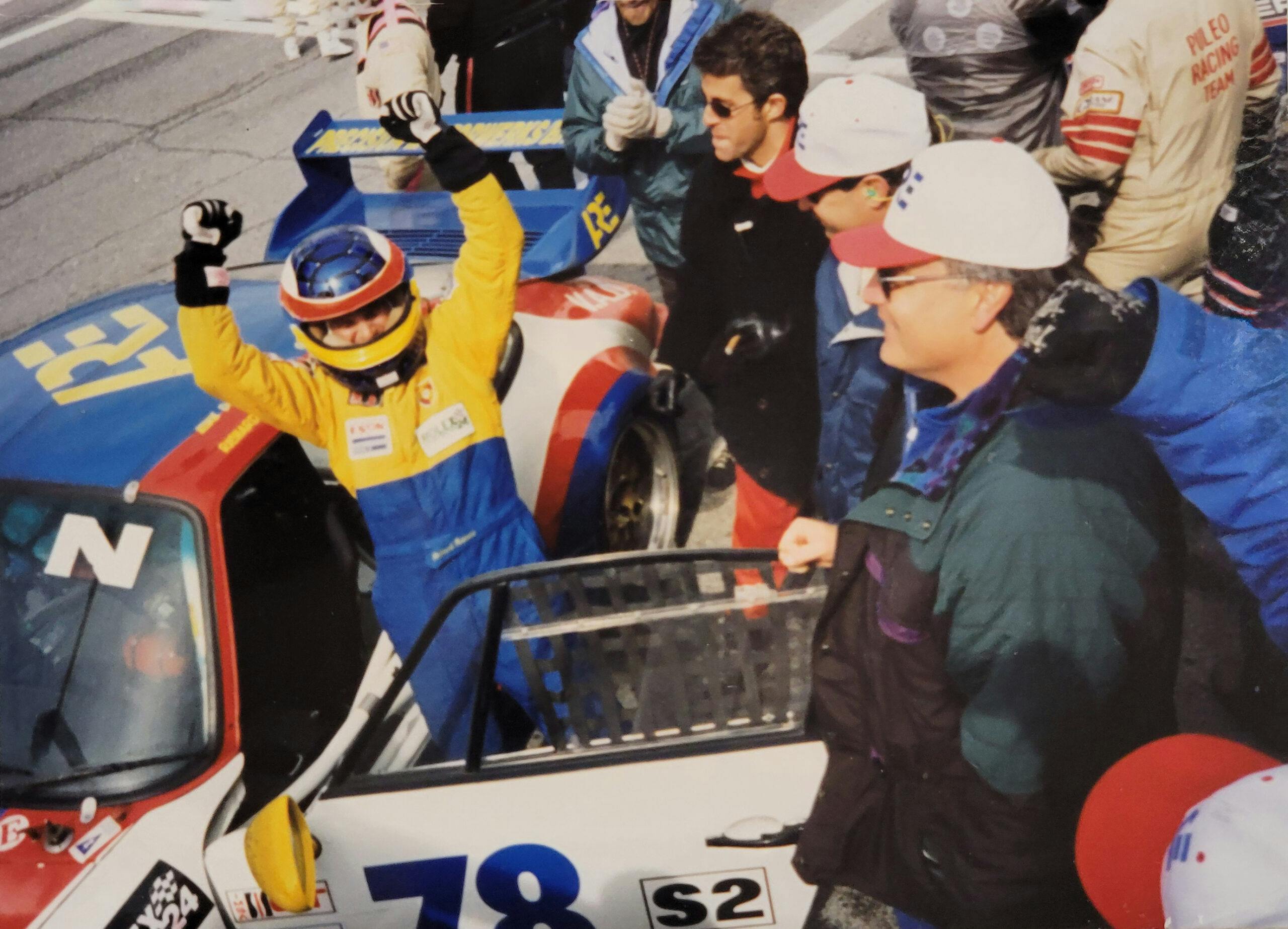
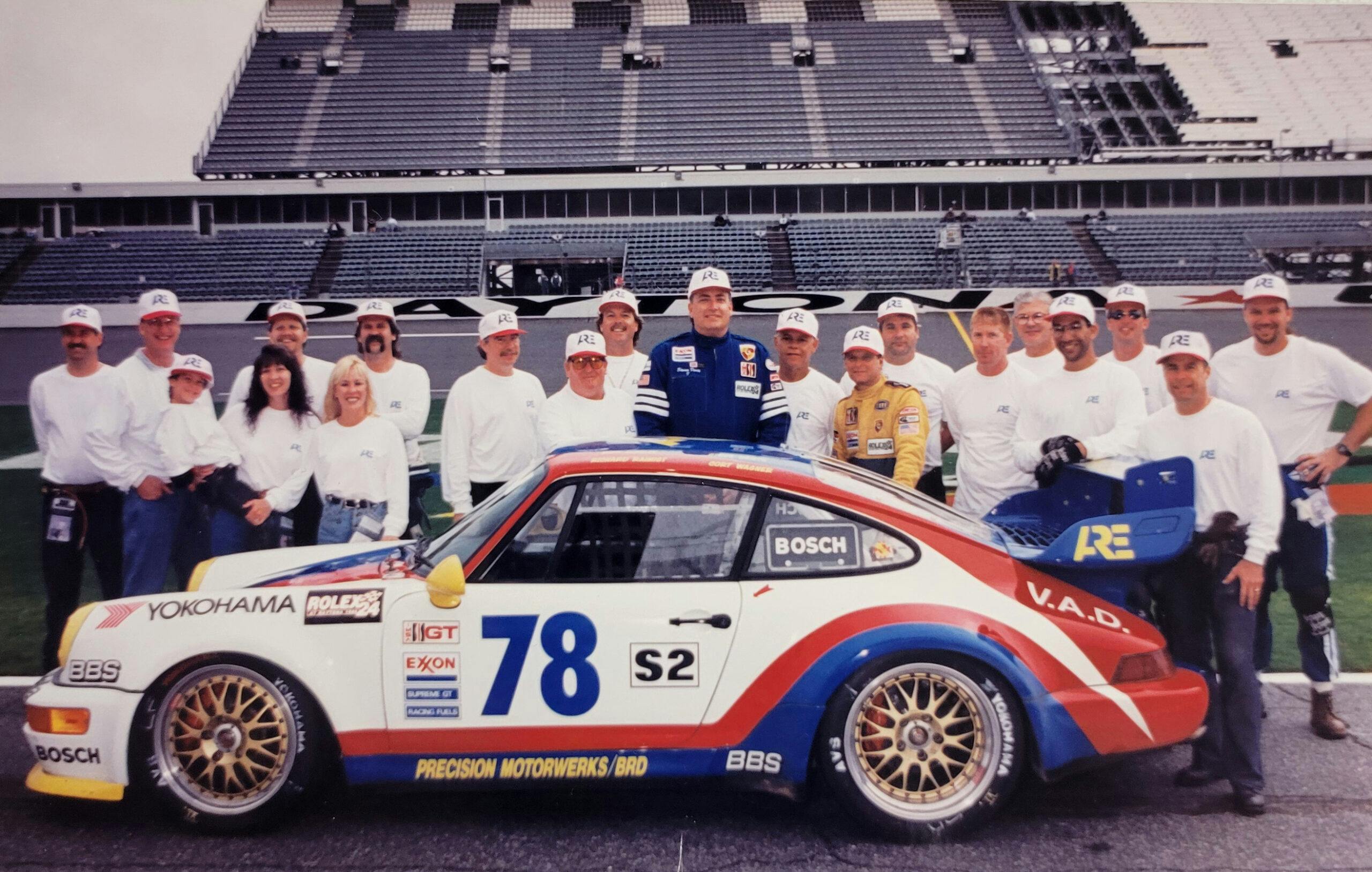
“I took the RSR and entered my first pro race with IMSA,” Raimist said. He entered a total of three in 1995, “and I did pretty well. I started my own business, ARE, for A Racing Enterprise.” The fire was fully lit by then.
“So I took my RSR and entered the 1996 24 Hours of Daytona. We qualified 45th [out of 76 cars] and after 24 hours, we had finished sixth overall and second in class.” That’s Raimist with his hands up in the air in the above photo, in the blue and yellow fire suit.
They took the car to the ’96 Twelve Hours of Sebring, where it crashed out early. “From that point it had gotten too expensive for me to continue to drive the car, so I started a rental driver program,” Raimist said. “We finished sixth in points for the full season,” plus a 14th place finish in the worldwide Porsche Cup Points Series, and in ‘97, Team ARE finished 9th in the Porsche Cup Series.

During that period, “I had still another ‘fire in the belly’ moment, and I went and bought a 1997 993, same thing, factory 3.8-liter Carrera.” It was promptly delivered to AASCO Performance in Santa Ana, California, the tuner shop partly owned by Dennis Aase, a driver on Dan Gurney’s All American Racers Toyota team. With the new 993 and his 964 RSR, Raimist entered two cars at Daytona in 1997. It was a big commitment. “We had a team of 30-plus people.”
Out of 80 cars, Team ARE finished 11th overall and third in class with the 993, while the 964 RSR ended up 29th overall and 14th in class, driven by four Porsche Club of America amateurs. “In 1996 and ’97, and part of ’98, we had 32 different drivers go through our program,” Raimist said. Some of his drivers went on to race in high-profile positions: Kelly Collins was hired by Corvette Racing to be a factory driver for the team, while professional financier Cort Wagner competed in a variety of classes and series, including in Grand-Am’s Daytona Prototype class for Chip Ganassi Racing.
By the end of 1998 season, most everyone in pro sports car racing was looking towards the inaugural Petit Le Mans race on October 11. The 10-hour event would be a template for a new upstart sanctioning body to launch in 1999, called the American Le Mans Series, owned by the mercurial Dr. Don Panoz, who made millions as the developer of the nicotine patch, yet died a chain smoker. The big draw for the first Petit, held at the Panoz-owned Road Atlanta, was that the ACO, sanctioning body for the 24 Hours of Le Mans, would award the class winners a starting spot in the 1999 24 Hours of Le Mans.
Raimist assembled a team of amateur drivers, led by the well-regarded Peter Argetsinger, racing the 993. They finished first in the GT class and ninth overall in the inaugural 1998 Petit, and while he did not get to race at Le Mans, because as a privateer, he couldn’t pull the funding together to make the ‘99 24 Hours of Le Mans, but let’s face it: A class win at the first Petit Le Mans should be enough to make the highlight reel of any racer’s life.
***
It’s early Sunday morning, and back to why I’m in Jupiter: A quick drive from my hotel, and I’ve arrived at the supplied address in a sort of office-slash-industrial park, the location of Raimist’s “man cave” to see the car that got his journey started, along with its much younger sibling.
And man, what a man cave.

The entryway leads to a room with a dinner-sized table, surrounded by walls filled with model cars, vintage signs and reproduction clocks, but the overarching décor is decidedly Porsche-centric. Make a left towards another, larger room: This is where the cars live. Ten of them—a pair of Corvettes, a couple of Mercedes, and six Porsches, including the 1973 and 2023 911s.
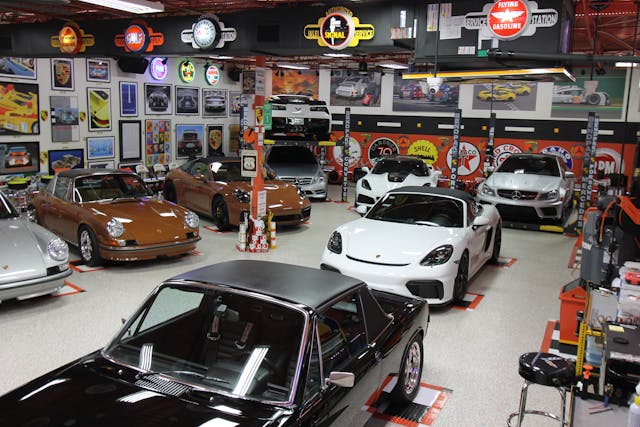
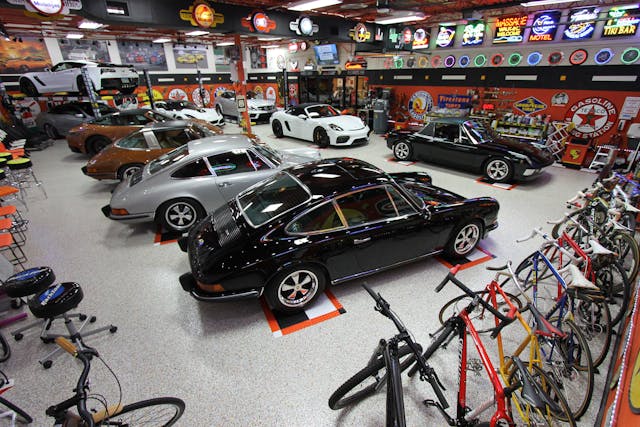
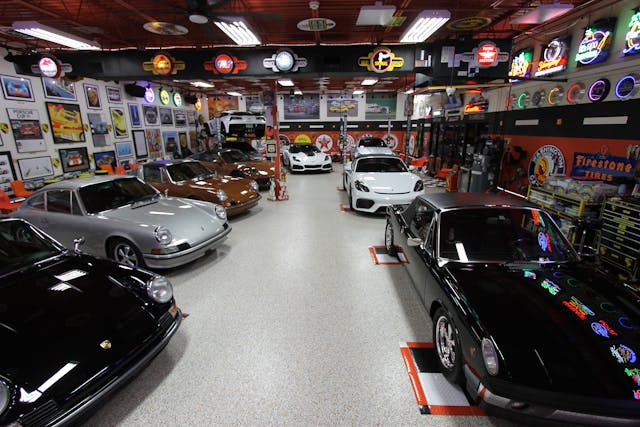

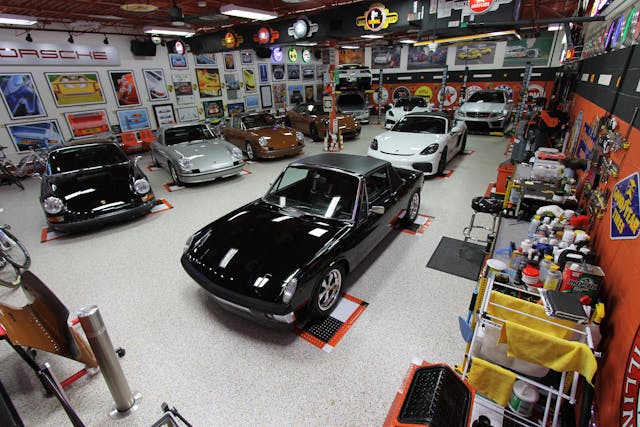
We wander the man cave for a bit, taking it all in: Appreciating the clean little 914, which Raimist has owned for “just” 33 years; marveling at the raw sinew of his 510-horse, Mercedes-Benz C63 AMG Coupe Black Series; leaning over to inspect the vintage bicycles that ring the bigger room. Then it was time to pull the pair of Sepia Brown Porsches out through the overhead door.
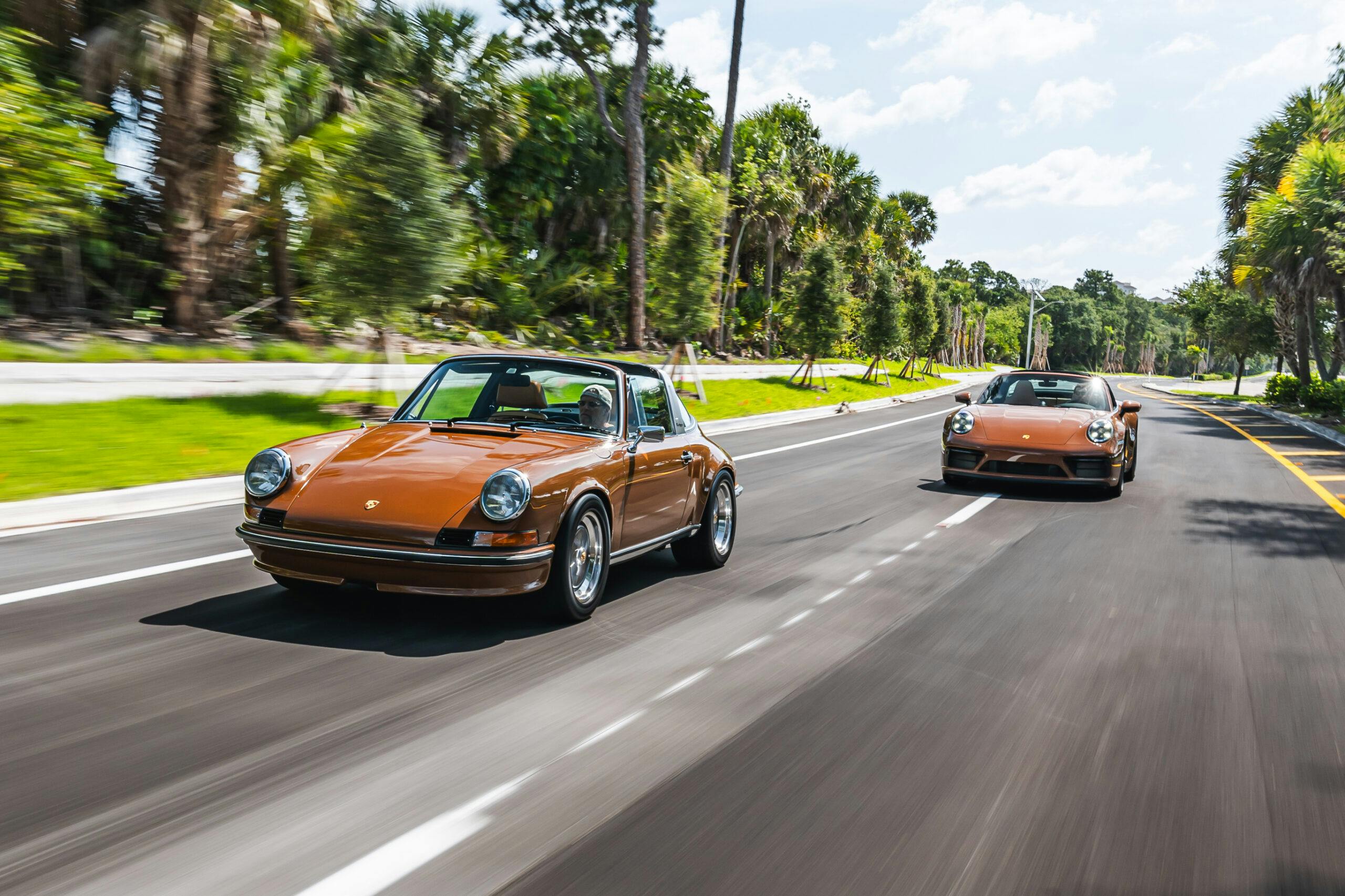
In the Florida sun, it’s easier to tell the difference in Sepia Brown, 1973 and Sepia Brown, 2023. Raimist said that the ’73 was refinished in 1991 using the proper single-stage Glasurit paint, color code 415-9-2. It got a base coat and a clear coat, “and there’s probably some lead in the paint,” he said. The 2023 car was special-ordered via Porsche’s PTS program—Paint To Sample—which includes over 160 available colors. It is indeed painted Sepia Brown, but with environmentally-friendly, water-based Glasurit. The difference between the two cars is subtle, but it’s there.

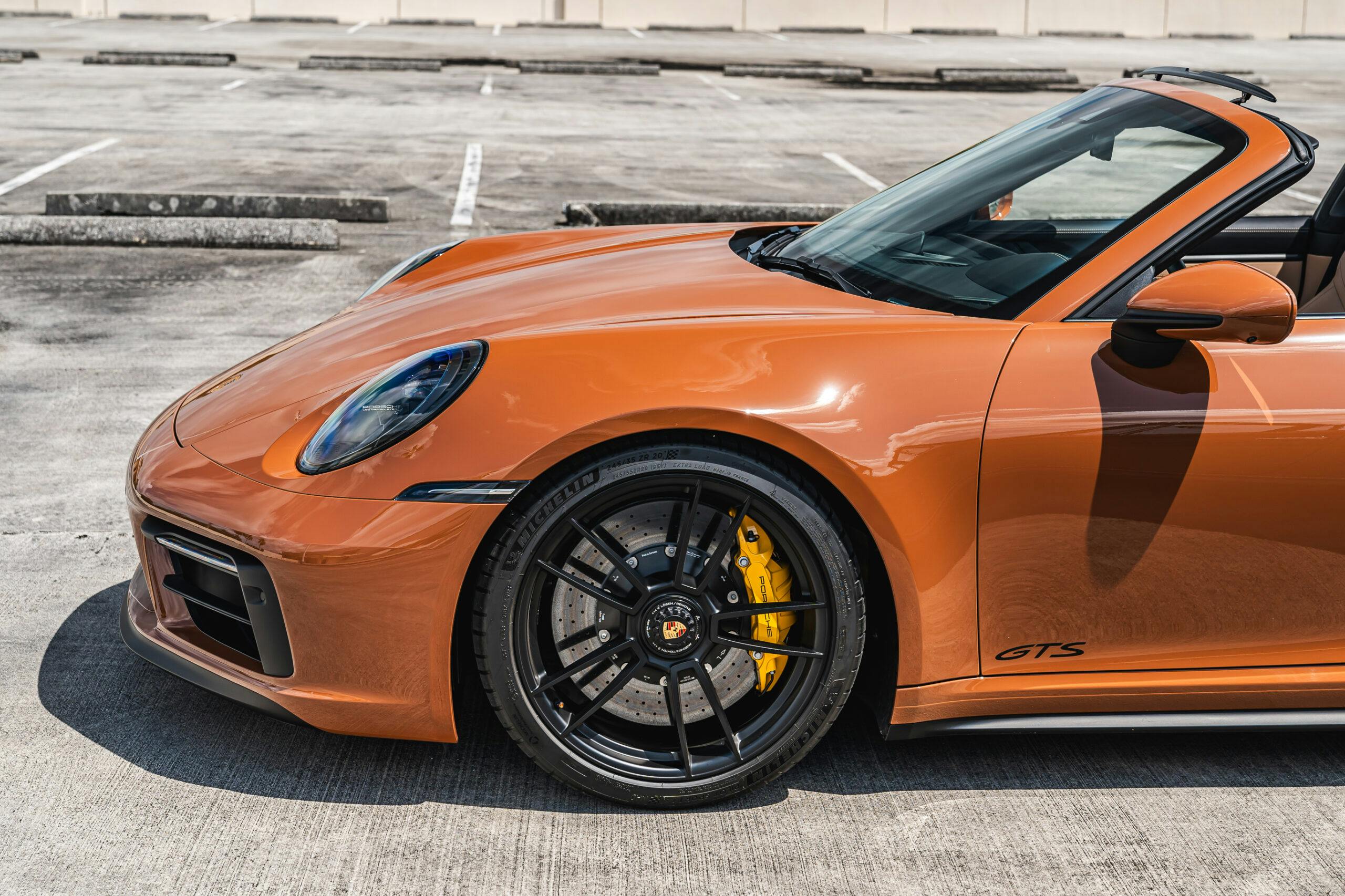

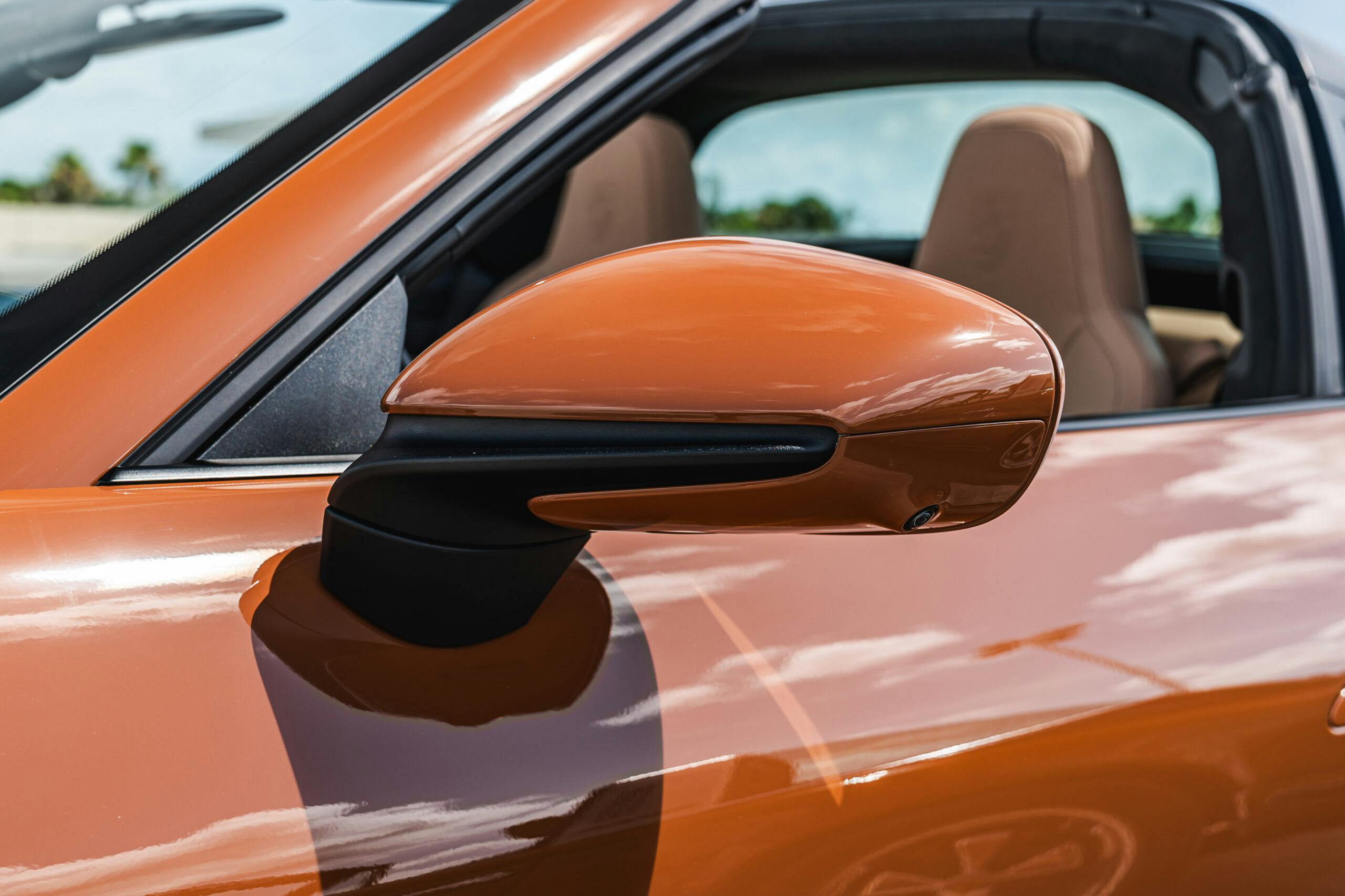
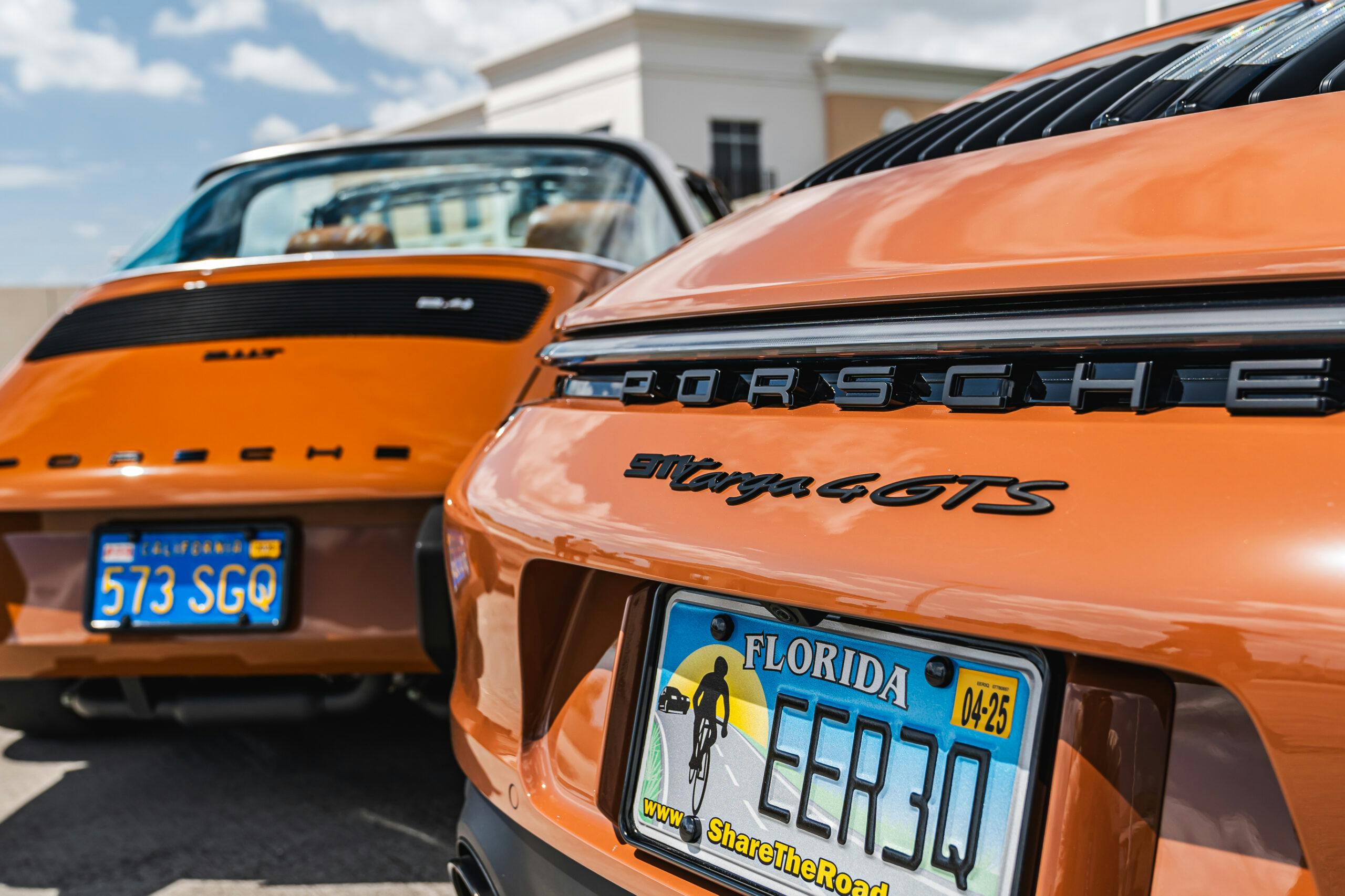
Camera car in tow, containing photographer Richard Mason Hughes, we hit the road for a Sunday drive, Porsche style. I start out in the 1973 911, immediately marveling at how well-preserved and relevant the car is. I shuck my shoes off and drive in my socks; my size 13s are a little big for the closely-spaced pedals.
The steering is a bit heavy, but precise. It takes a minute to adapt to the braking: Your spoiled feet just assume that every brake pedal you press is power-boosted, so when it isn’t, you might roll a few feet past the first stop sign you encounter.

The ’73 911 measures 163.3 inches long, 63.5 inches wide. The 2023 is almost 178 inches long, 73 inches wide. The difference doesn’t feel like that much, at least inside—there’s plenty of elbow room in the 1973 model, and the roof in both cars should be plenty high enough to allow for the use of a helmet. And if it isn’t, just pop off the Targa top, which you should have already done anyway.
There’s just more of everything in the 2023, including weight, about a thousand-pound difference. That’s one reason the 1973 model feels so light on its feet.
“Certainly,” Raimist said, “the technology is light-years advanced in the 2023 model over the air-cooled, long-hood ’73. But there’s nothing like driving the earlier car. No bells and whistles to worry about, no Bluetooth, no OnStar—it’s just you and the car. I never turn the music on. I just listen to the exhaust note.” Which, incidentally, emanates from a set of Bursch headers, and a Bursch sport exhaust muffler.
Clutch action is light and gear changes are easy in the ’73. On days like this, it’s mandatory windows-down in both cars to take in the sounds. The 1973 car, powered by that larger transplanted 3.2-liter engine, sounds wonderful idling, or accelerating in full song, or anywhere in between.

Shifting over to the 2023 911, right away I missed the almost inexplicable organic nature of the ’73. New 911s feel so, well, German—which is not a bad thing. Every time you ask something of the car, it delivers immediately. It’s profoundly competent. The 3.0-liter twin-turbo engine pumps out 473 horsepower from the factory, but Raimist, who I think we’ve proven can’t leave anything alone, sent it to the tuner for a little work when the car only had 35 miles on it. “When I first got the car,” Raimist said, “I couldn’t hear the engine. I took it down to Champion Motorsport in Pompano Beach, and we put in the exhaust system and some lowering springs, and it made a world of difference.”
That exhaust, a state-of-the-art Kline Inconel system, added a startling 99 horsepower, for a total of 572. The exhaust note—well, no problem hearing the engine now. It snarls, urgent and impatient, popping and gargling on deceleration. It’s invigorating, reminding me of why I like to stand in the first turn of the Rolex 24 at Daytona and just listen.
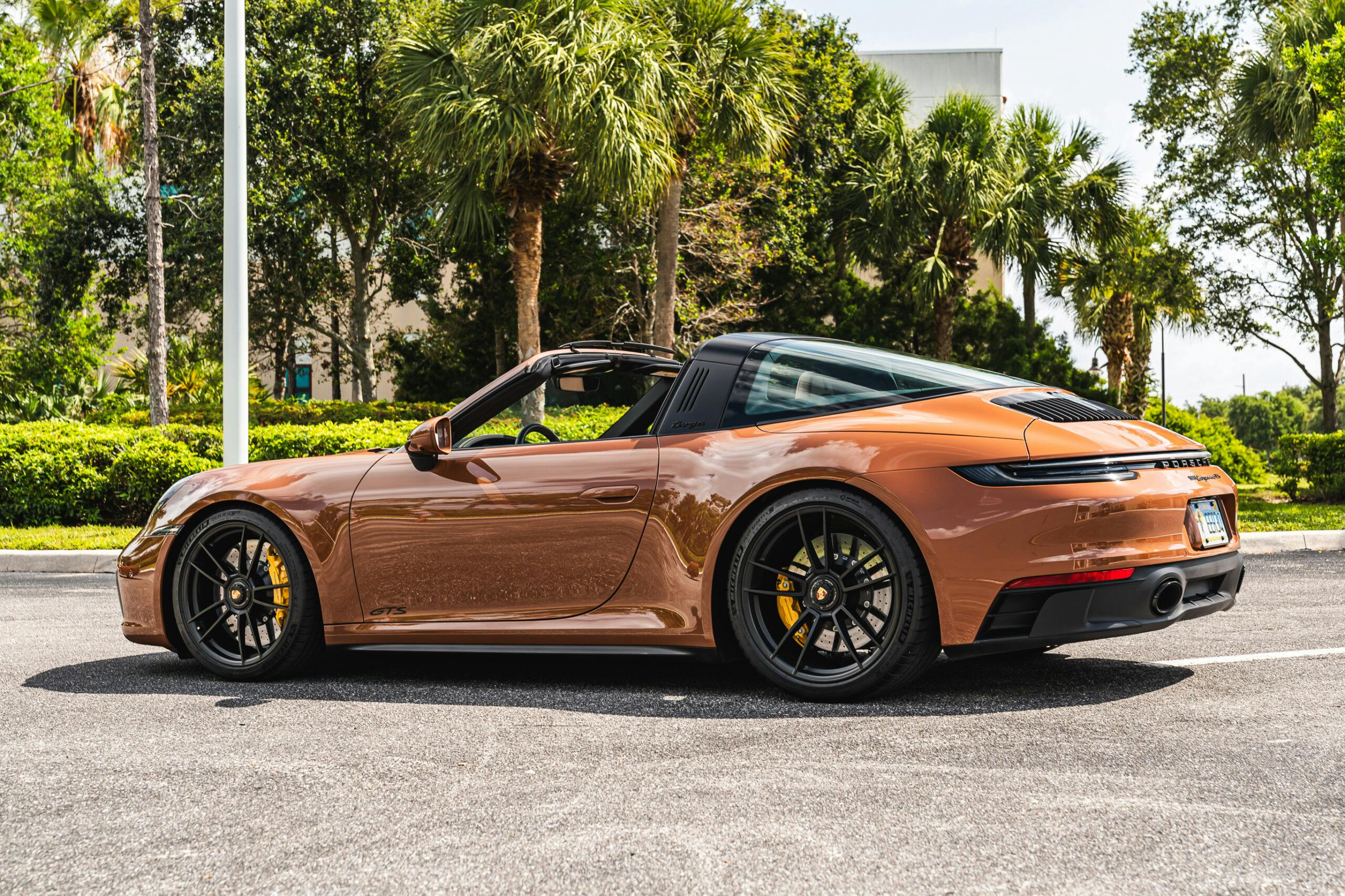
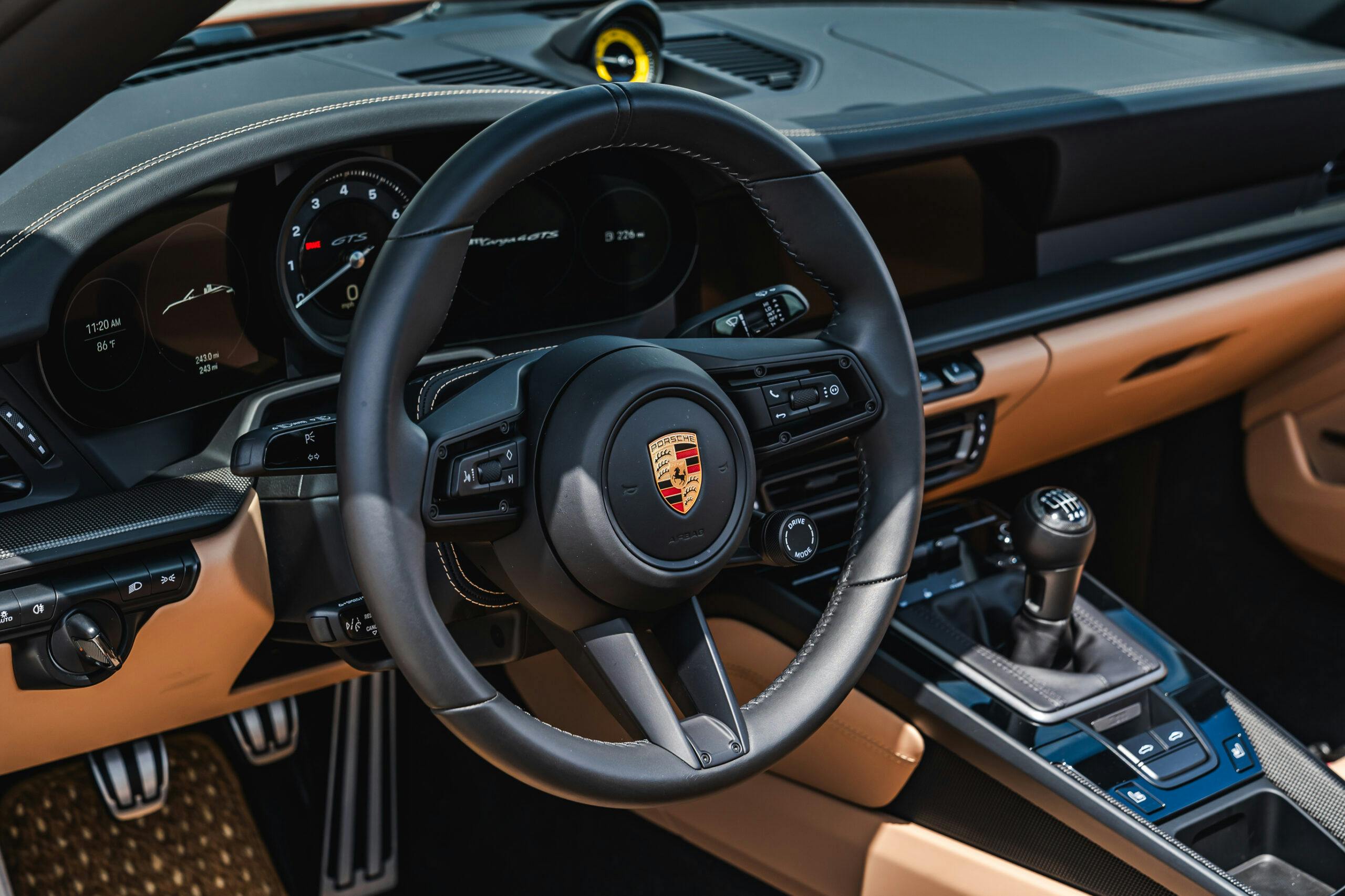
Gears in the auto-rev-matching, seven-speed manual transmission are nicely spaced, and shift action is certainly smoother than the ‘73’s gearbox. The transmissions in both cars point up why manuals are so much fun, and how they will be missed when they’re gone.
Frankly, I fell in love with Raimist’s 1973 911T. To be more than 50 years old—which seems impossible—it’s an analog car in a digital world, sure, but it’s just so endearing. Take the rear license plate, for instance: It’s the original California tag, with 51 registration stickers, carefully applied, one on top of the other.
The ’73 reminds Raimist of a kinder, gentler time. “We used to flash our headlights when you saw another Porsche coming. We don’t do that anymore. Back then, there was a true camaraderie there.”
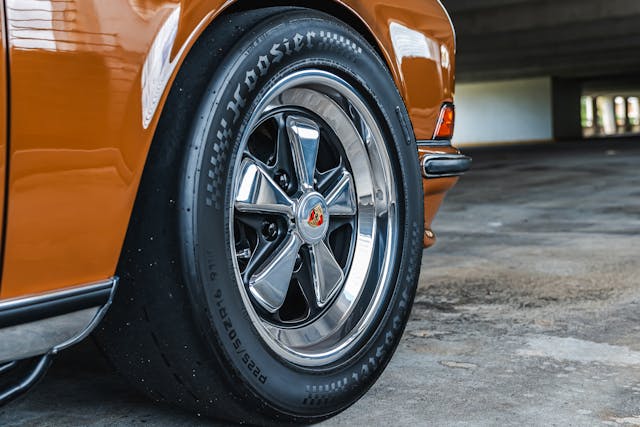
If I have to pick one takeaway from the brief comparison, it’s the fact that—inside or out, front or rear—you know at first glance that the 1973 begat the 2023, a very natural evolution that is nearly unheard of in our automotive world. What other prominent vehicle has carried its basic design and personality over, freshened a little year by year, recognizable for half a century? Jeep, maybe? Can you name another? I don’t think I can.
Sunday afternoon, it’s time to take a last tour of Richard Raimist’s man cave—you can check it out here, on his YouTube channel—and head home.
But I may be back. He has, on order, a 493-horsepower, 2024 Porsche 718 Spyder RS. In Sepia Brown, of course. Yeah, I’d like to drive that one, too.


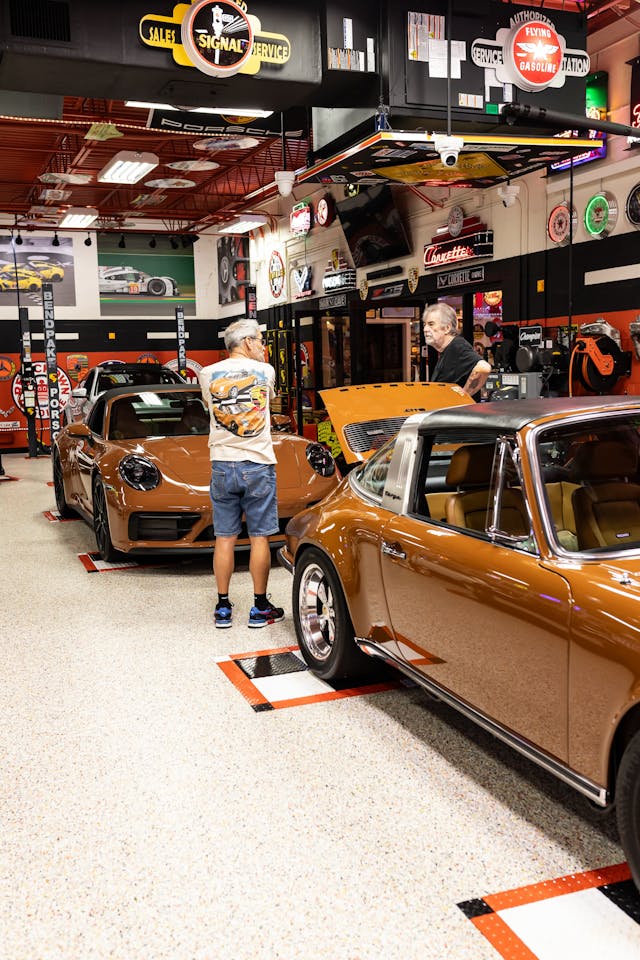

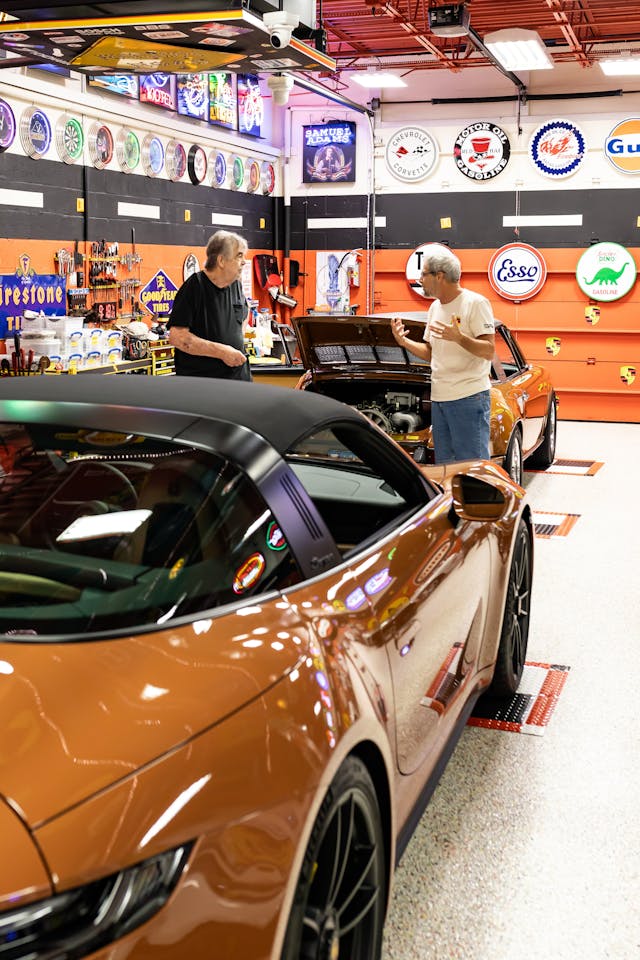
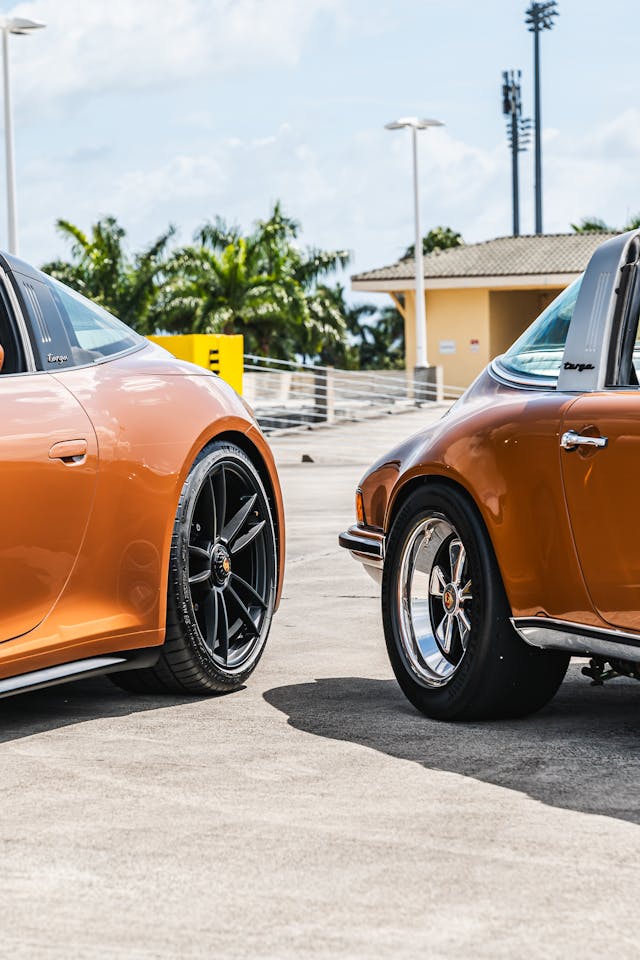

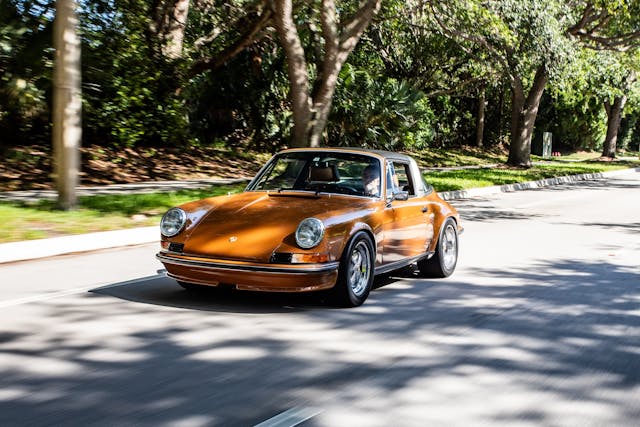

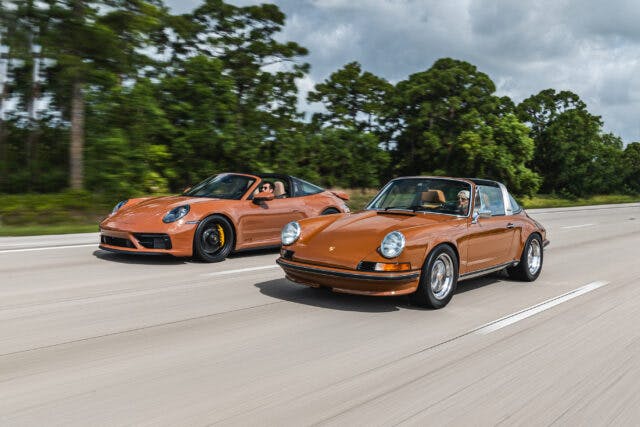
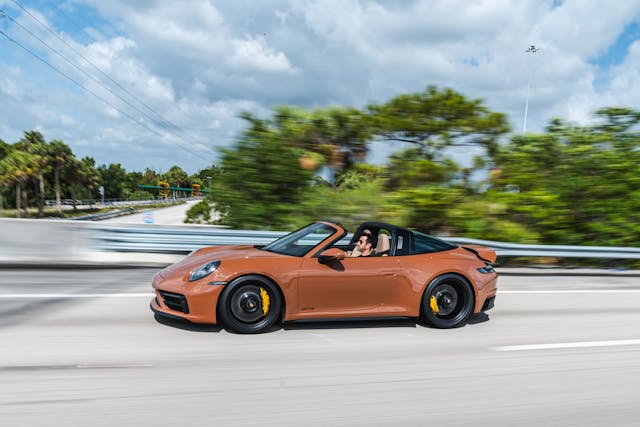
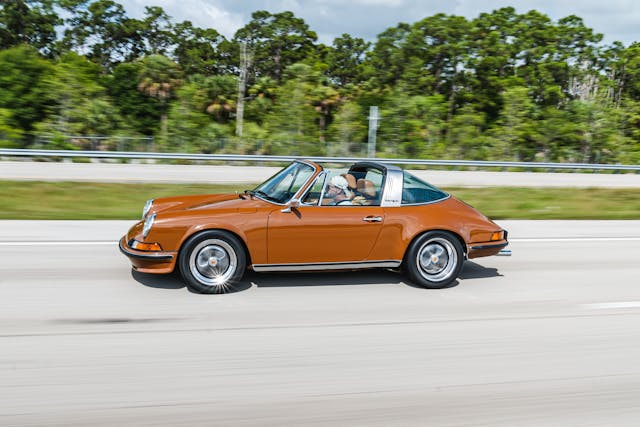



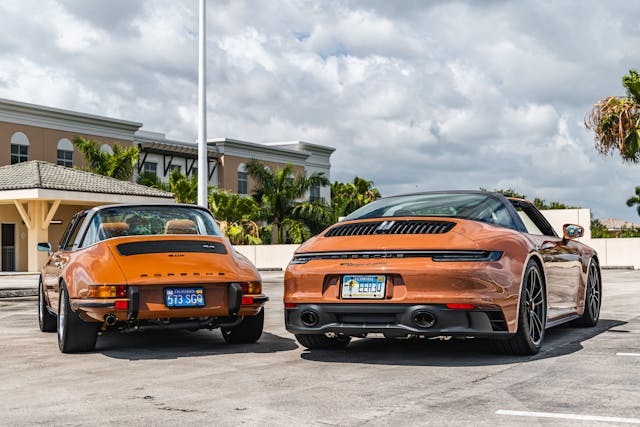
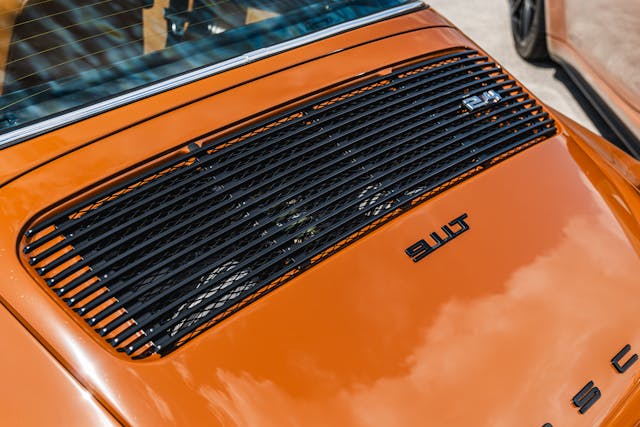
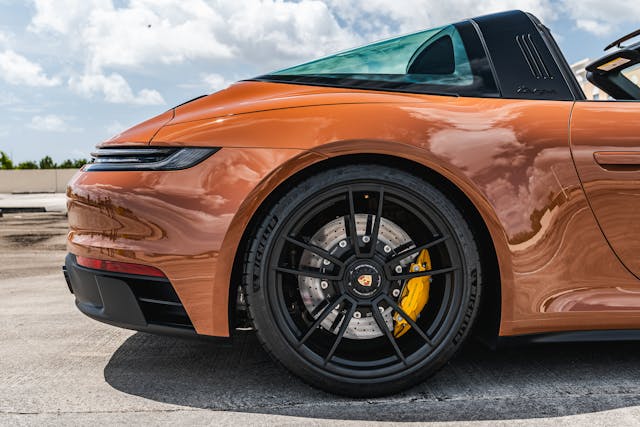
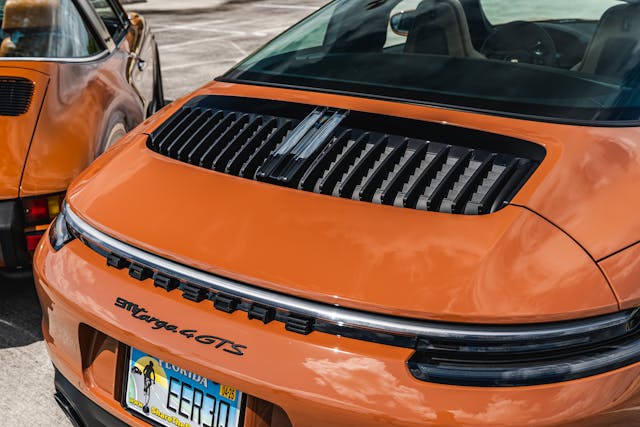

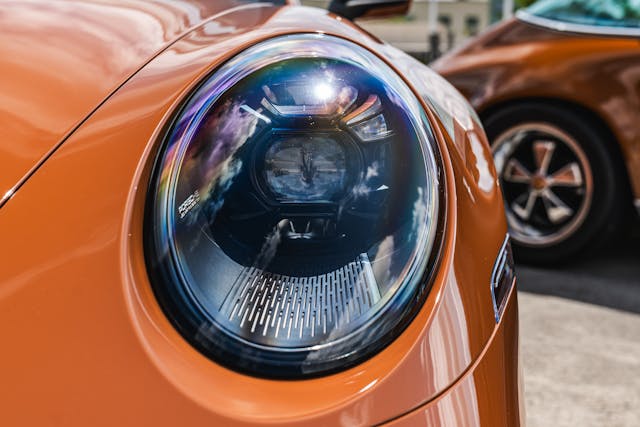
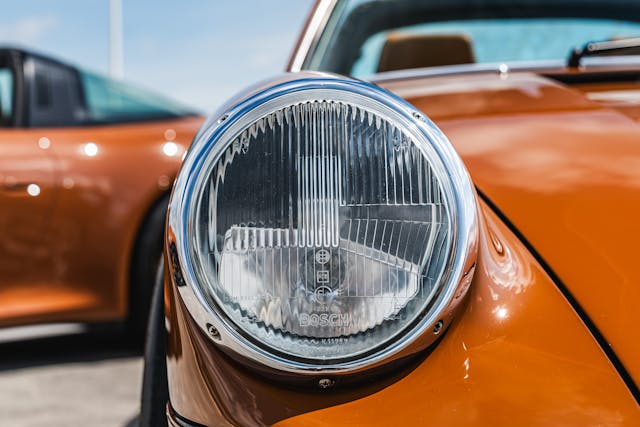
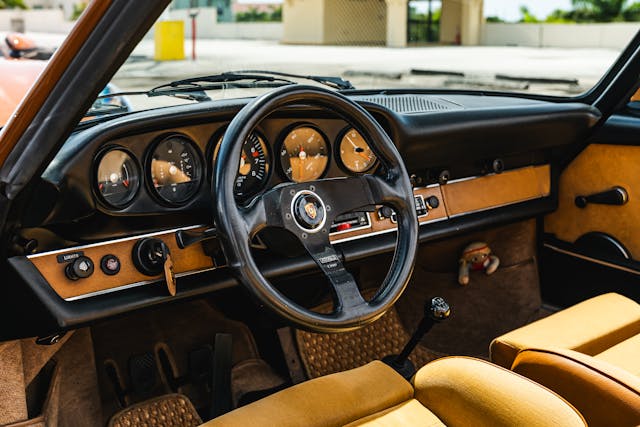
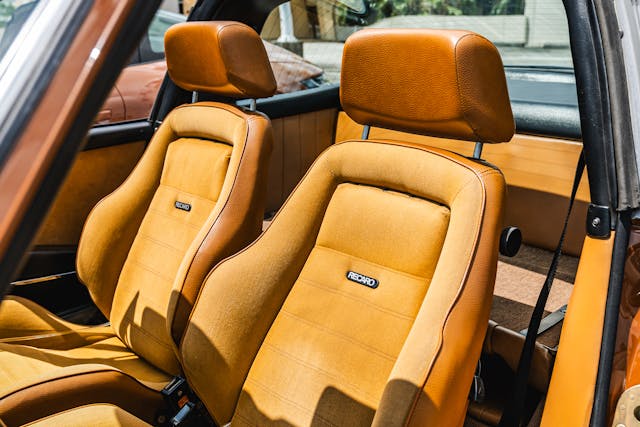

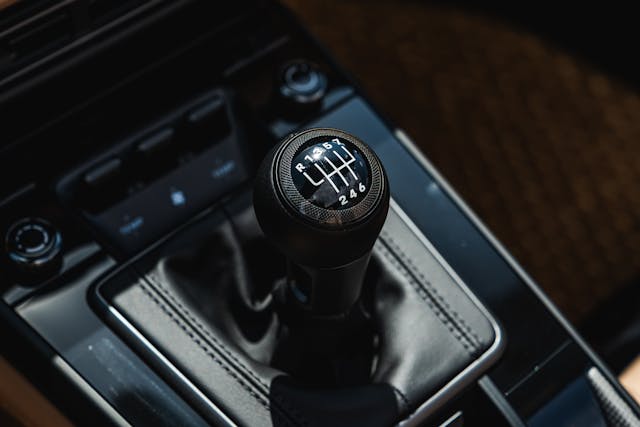


***
Check out the Hagerty Media homepage so you don’t miss a single story, or better yet, bookmark it. To get our best stories delivered right to your inbox, subscribe to our newsletters.



I never got the 911 thing. I was a it’s just a VW kind of guy.
Then I drove a air cooled Carrera the length of California on the PCh and I5. Also many trips from San Diego to LA. It was then I learned that any car can go fast but a good chassis will make going fast feel slow. A bad car can make 45 mpg feel like you are flying in a sports car but a good one will make 110 MPH feel like 50 MPH.
That is what I learned from the 911. To be honest I like the older cars over the new 911. Less is more in my view. The air cooled was a good bargain but today the prices have come and removed that.
That car changed my mind about more than the 911 but sport’s cars in general. Stiffer springs, bigger bars and larger tires may not be a formula for success. You need to make all the parts work together. that is what this car does well.
Had a ‘73.5 T with CIS, and at a different time, a ’78 911. I actually preferred the earlier car, and it’s the car I most regret selling of the dozens I’ve owned.
Great story – thanks, Steven. And, fantastic photography. The Sepia on both cars is a fantastic, unique and unusual colour and I absolutely love it! I have only driven a handful of Porsches and all pre-1992, so really can’t make judgements, but something tells this 59-year-old I would prefer the Recaro-seated 73 over the 23…
I’ll take the ’73 over the later car.
I love Porsche and have been hooked since October 1977 on I-15 between Las Vegas and L.A. when a 1976 Turbo Carrera with the TURBO graphics along the side passed us. Have had five 911’s to date but currently Porscheless. Truth be told, if I won a lottery tomorrow, the last place I would be going is to a Porsche dealership and looking at the current lineup of computers. 15″ longer, 10 inches wider, 1000 lbs. heavier……….sorry Porsche, I’ll take Air-Cooled, smaller, lighter and simpler every time.
Great story, but one comment. Are we sure about an aftermarket exhaust system adding 99hp to the 2023 911? That’s more than 20% gain over the stock output.
Two points. First, I don’t think you’d achieve a 99 hp gain if you completely removed the exhaust from the manifolds back. Second, Porsche, like all manaufacturers, run endless amounts of computational fluid dynamics analysis to optimize intake, combustion, and exhaust flow. With all their engineering expertise, there’s no way they left 99 hp on the shelf. I suspect the aftermarket doesn’t meet emission standards, but even without cats and minimal muffler, I just can’t believe they achieved a 99 hp gain.
I’m not going to fault the modifications to the ’73 Targa, but is it really an honest comparison of “50 years of man-made evolution” to compare the 2 cars when the ’73 is running a larger displacement engine from 1986 rather than an engine from 1973?
Interesting article and well done. Earlier cars are always more endearing for me personally. Too much unnecessary complexity on newer cars.
Loved the article. I bought a 1972 911T in early 1974. It had 11,000 Miles and still under warranty. Purchased it for $8,000 which wad pricey back then. Great car!!